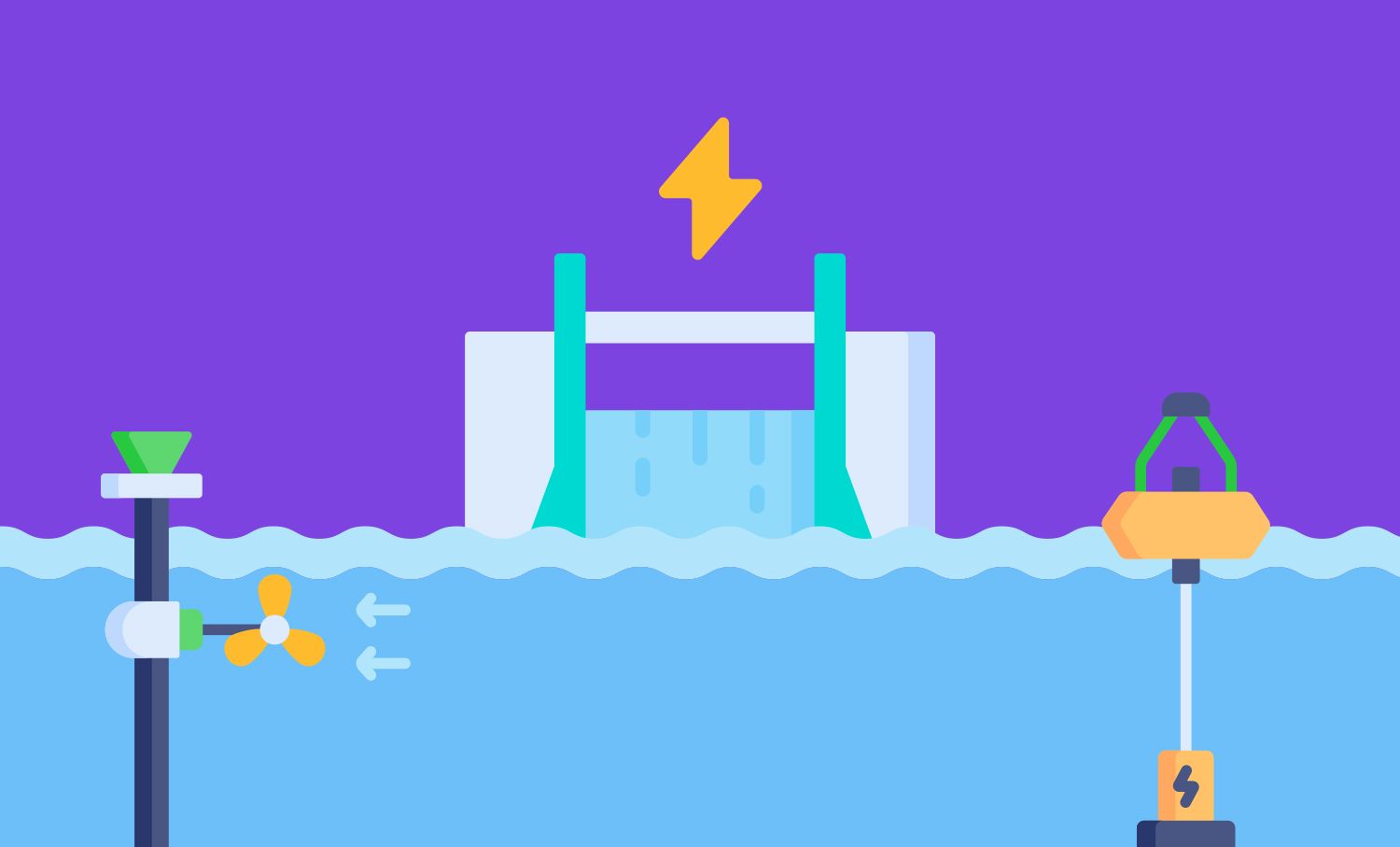Hydropower, How Does It Work?

Hydropower is one of the oldest sources of renewable energy but what is it and how does it help reduce carbon?
The history of hydropower dates back thousands of years. For instance, more than 2,000 years ago the Greeks used water wheels to grind wheat into flour, therefore it will come to no surprise that the word Hydro means water in Greek.
Hydropower and pumped storage continue to play a crucial role in the fight against climate change by providing essential power, storage, and flexibility services. Hydro energy offers a number of advantages to the communities that it serves but does need careful consideration to mitigate any other negative impacts from projects in particular very large projects (such as mega-scale hydro-electric dams).
Reliable electricity
Hydropower/hydroelectic power is recognised for being a clean and cost-effective form of energy. Hydroelectric plants can provide power to the grid immediately, serving as a reliable and flexible form of backup power source in case of major electricity disruptions or outages. Hydropower benefits don't end here, it also produces water supply, irrigation support and flood control.
Using hydro to generate electricity has both benefits and losses for the environment. Hydropower produces cleaner energy compared to fossil fuels, however hydropower facilities change their surrounding environment, which can affect both humans and wildlife as intense use of land and water create an imbalance in the ecosystem around the dam area.
How does it work
Hydropower is recognised as a fairly simple but mature technology, where potential water source energy is converted into kinetic energy which causes turbines to spin driving electricity generators.
Since hydropower uses water to generate electricity, plants are usually located on or near a water source. The energy available from the moving water depends on both the volume of the water flow and the change in elevation from one point to another. The greater the flow and the higher the elevation, the more electricity can be generated from it.
Cost
Compared to other electricity sources, hydropower costs less than most in particular as it has little to no ongoing fuel requirements. Hydro energy sources require relatively low costs throughout the duration of a full project lifetime in terms of maintenance, operations, and fuel. Like any major energy source, significant upfront costs are unavoidable, but hydropower’s longer lifespan spreads these costs out over time. Additionally, the equipment used at hydropower facilities often operates for longer periods of time without needing replacements or repairs, saving money in the long term.
The installation costs for large hydropower facilities consist mostly of civil construction works and electromechanical equipment costs. Since hydropower is a site-specific technology, these costs can be minimised at the planning stage through proper selection of location and design.
Ready for when the sun doesn’t shine and the wind doesn't blow
Pumped Storage Hydropower (PSH) - the world’s largest battery technology - is a type of hydroelectric energy storage that is ideal for electricity grids reliant on solar and wind power.The technology absorbs surplus energy at times of low demand and releases it when demand is high.
PSH works by using the force of gravity to generate electricity using previously pumped water from a lower source to an upper reservoir.
At times of low demand and low electricity prices, the water is pumped to the higher reservoir. Whereas at times of high demand and higher prices, the water is then released to drive a turbine in a powerhouse and supply electricity to the grid.
Pumped hydro facility energy storage capacity depends on the size of its two reservoirs, while the amount of power generated is linked to the size of the turbine.
According to the International Hydropower Association, a facility with two reservoirs roughly the size of two Olympic swimming pools, and a 500 metre height difference between them, could provide a capacity of 3 megawatts (MW) and store up to 3.5 megawatt hours (MWh) of electricity.
Future of hydropower
Severe droughts can result in hydropower generation decrease. According to IEA hydropower generation decreased by 15 TWh (down 0.4%) in 2021, declining to 4,327 TWh despite a step increase in capacity growth. This was caused by droughts in several parts of the world. Hydro remains the largest renewable source of electricity, generating more than all other renewable technologies combined. In the Net Zero Emissions by 2050 Scenario, hydropower maintains an average annual generation growth rate of about 3% in 2022-2030 to provide approximately 5 700 TWh of electricity per year. However, significantly stronger efforts are required to streamline permitting and ensure project sustainability, as in the last five years the growth rate was just one-third of what is required.
As outlined in the 2022 Hydropower Status Report, new data shows that hydropower development grew steadily worldwide last year, but is still falling drastically short of the rate needed to deliver net zero emissions.
Recent studies suggest there is significant potential for scaling up global pumped hydro capacity, including from more than 600,000 identified off-river sites. Hydropower plants are a reliable foundation of some countries clean power systems of the future and will help many meet their renewable energy targets in future years as well as support the integration of intermittent renewable generators. All-in-all, hydro energy will remain an essential component of global energy systems move towards decarbonisation long into the future.
Sources:
https://www.iea.org/reports/hydroelectricity